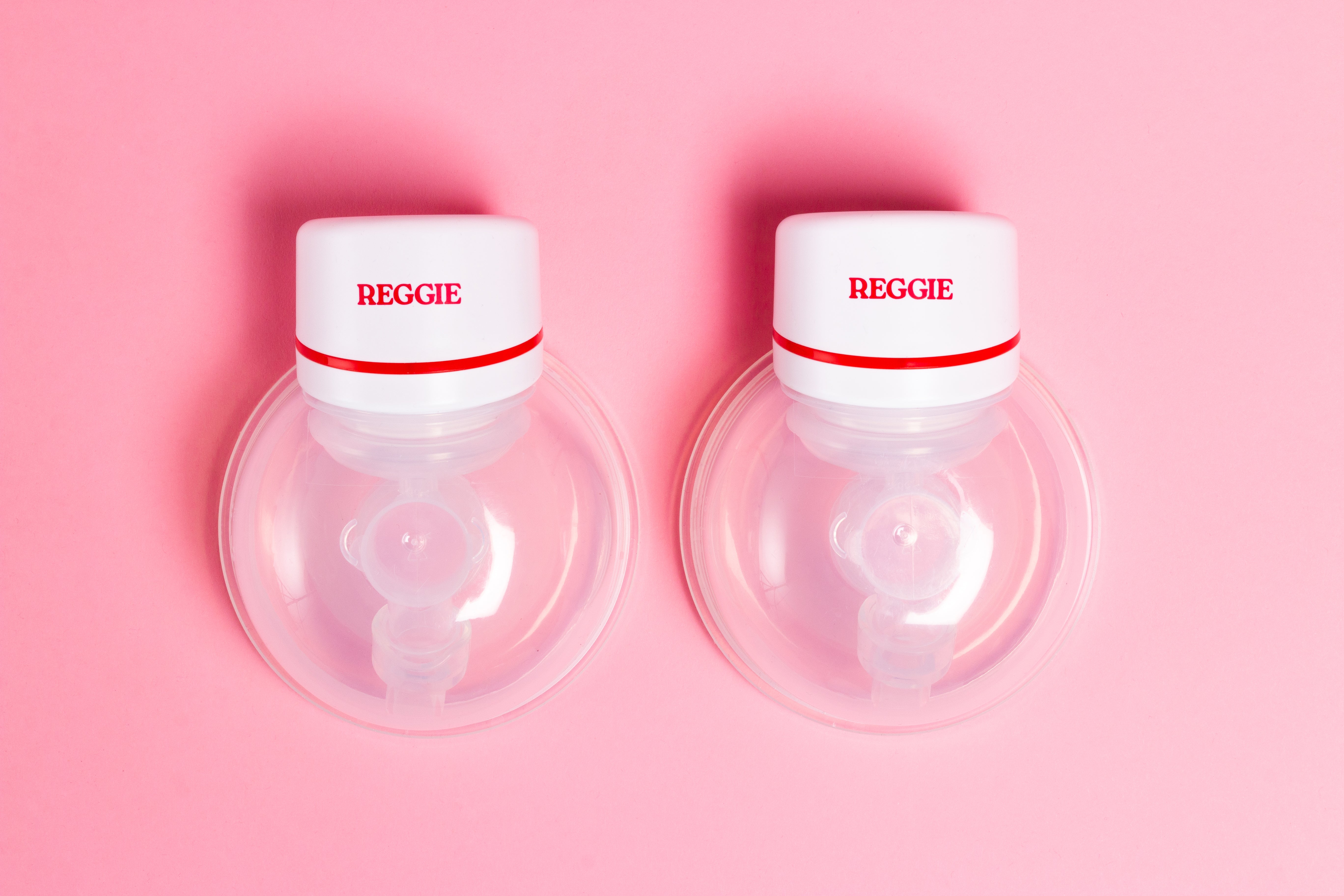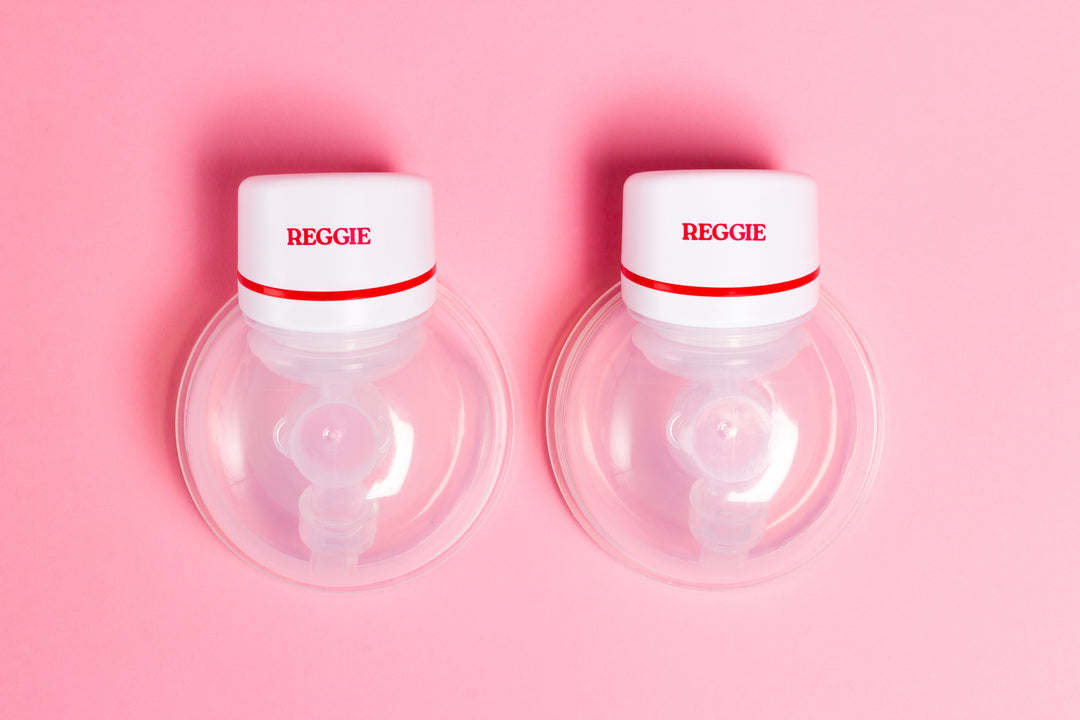First-Time Pumping Stories from Real Mums
Pumping breast milk for the first time can feel overwhelming, but with the right tools, tips, and support, it gets easier. Here's a quick guide to help you get started:
- Common Challenges: Low milk supply, sore nipples, and finding time to pump are frequent issues. Relaxation, hydration, and proper equipment can help.
- Equipment Tips: Ensure your pump fits well (measure your nipples for the right flange size), start with low suction, and clean pump parts regularly.
- Time Management: Pump every 3-4 hours early on and focus on mornings for higher milk output. Hands-free pumps can help busy mums multitask.
- Community Support: Sharing experiences with other mums can provide practical advice and emotional reassurance.
Whether you're using a traditional or wearable pump, creating a routine and having the right setup can make pumping more manageable. Remember, you're doing an amazing job - take it one session at a time!
First-Time Pumping Challenges
Pumping for the first time can feel overwhelming, but having a clear plan can make the process smoother and more manageable.
Milk Supply Issues
One of the biggest concerns for new mums is low milk supply, and stress plays a major role in this.
"Stress is the No. 1 killer of breastmilk supply, especially in the first few weeks after delivery. Between lack of sleep and adjusting to the baby's schedule, rising levels of certain hormones such as cortisol can dramatically reduce your milk supply."
To support milk production, lactation consultants recommend pumping every three to four hours. Dawn Schindler, RN, BSN, IBCLC, shares this advice:
"When you take a few minutes to prepare to pump, you'll be able to truly relax. And being relaxed helps your milk supply."
Simple tips include skin-to-skin contact, drinking plenty of water, and eating protein-rich foods. Some mums also swear by oatmeal and other galactagogues to help with supply .
But milk supply isn’t the only challenge - finding the time to pump can also be tricky.
Managing Time Constraints
Pumping can feel like a full-time job, especially in the early weeks. Experts suggest aiming for around eight pumping sessions daily during the first 12 weeks, eventually reducing to about six sessions per day .
Dr. Nikki L. Roberts, OB-GYN, suggests prioritising morning sessions if time is tight:
"If you are unable to pump after every feed, focus on pumping in the morning. The difference may be small, but you may find that the total volume of milk produced is greater."
Here are some strategies to help fit pumping into a busy day:
| Timing | Strategy | Benefit |
|---|---|---|
| Morning Sessions | Pump 30 minutes after nursing | Higher prolactin levels maximise output |
| Work Hours | Align pumping with baby's feeding schedule | Maintains supply and routine |
| Between Feeds | Single pump during skin-to-skin contact | Improves efficiency |
| Multiple Sessions | Refrigerate pump parts between uses | Cuts down on cleaning time |
Having the right equipment can also make a big difference in how manageable pumping feels.
Getting Started with Equipment
Using the correct equipment is key to a comfortable and effective pumping experience. Ashley Georgakopoulos, IBCLC and Motif Medical Lactation Director, explains:
"Using a pump should be a similar sensation to comfortable breastfeeding: some pressure and gentle tugging. If you catch yourself dreading the feeling of your pumping sessions or wince while pumping, it is counterproductive to ignore."
Here’s how to set yourself up for success:
- Make sure your flange fits properly.
- Start with the lowest suction setting and adjust as needed.
- Replace pump parts regularly and sterilise them after each use.
For working mums, starting a pumping routine two to three weeks before returning to work can help ease the transition . Adding a hands-free pumping bra and creating a relaxing space can also make sessions more comfortable .
Choosing Pumps and Parts
Selecting the right pump and accessories can make pumping more comfortable and efficient. Building on earlier equipment tips, the next step is finding the pump style and accessories that fit your needs.
Standard vs Wearable Pumps
Traditional pumps come with external components like shields, valves, and bottles, all connected to a motor. Wearable pumps, such as those offered by Reggie Baby, are designed to fit directly into your bra, offering more freedom to move around.
An informal poll of 872 mothers revealed that 61% experienced reduced milk output when using a wearable pump compared to a traditional one. Most reported a difference of more than an ounce per session.
| Pump Type | Key Features | Best For |
|---|---|---|
| Traditional | External motor and tubing, stronger suction | Full-time pumping; optimising output |
| Wearable | Wireless, integrated design | Active lifestyles; discreet pumping |
Think about your pumping goals and daily routine to decide which type works best for you.
Pump Selection Guide
To make an informed choice, try both pump types at the same time each day over several days. If you pump exclusively, a traditional pump might be better for your main sessions, while a wearable pump can be handy for times when mobility is important.
Once you've chosen a pump, having the right accessories will make a big difference.
Essential Accessories
For comfort and effective pumping, use a flange that is 4–6mm larger than your nipple size. Keep spare parts like valves and membranes available, and consider flange inserts to adjust shield size. Adapters can also be useful for making different pump models compatible.
These tips reflect advice shared by members of the Reggie Baby community.
Pumping While Active
Being active while pumping goes hand in hand with choosing the right equipment and sticking to a schedule. This approach helps mums maintain their milk supply without being stuck in one place.
Mobile Pumping Tips
Wearable pumps are a popular choice for mums who need to express milk discreetly in different settings.
Here are some tips for successful mobile pumping:
- Pack smart: Include spare parts, storage bags, and cleaning supplies in a pump bag.
- Stay powered: Carry a portable battery pack or plan ahead to find power outlets.
- Keep milk fresh: Use insulated compartments with ice packs to store expressed milk safely for up to 24 hours.
Having a routine in place helps ensure milk supply stays consistent while pumping on the go.
Setting a Schedule
A well-thought-out pumping routine is key to maintaining milk production. Marie Lattarulo, RN, IBCLC, advises:
"It's important to have a comfortable, quiet place to pump... The goal is to be in an environment that is as relaxing as possible. That's when your milk production will be best."
| Time of Day | Recommended Action | Duration |
|---|---|---|
| Morning | First pump session | 15–20 mins |
| Every 3 hours | Regular sessions | 15–20 mins |
| Before bed | Final session | 15–20 mins |
For mums planning to return to work, it’s helpful to start pumping 2–4 weeks beforehand to build up a freezer stash. Blocking out pumping times in your work calendar can also help avoid scheduling conflicts.
Hands-Free Solutions
Wearable pumps have changed the game for many mums. Alex Nation shares:
"This portable breast pump is a total game changer. I can accomplish so much, all while expressing, and they are so comfortable. It's really gentle on the nipple and hugely effective as well."
Jacqueline Kincer, I.B.C.L.C. and founder of Holistic Lactation, adds:
"For the mother who truly needs to be multitasking, a wireless pump will allow her to continue to produce milk for her baby where this otherwise wouldn't have been possible."
To make the most of hands-free pumping:
- Use visual or audio cues of your baby to help with let-down.
- Keep snacks and water nearby to stay energised.
- Wear loose clothing or nursing-friendly apparel for added comfort.
For mums looking for hands-free convenience, products like Reggie Baby's wearable, wireless breast pumps offer practical solutions that fit an active and multitasking lifestyle.
Advice from Experienced Mothers
Learning Through Practice
Pumping becomes easier with time and experience, even though the early days can feel overwhelming. Dr. Lauren Crosby, M.D., F.A.A.P., shares this insight:
"Moms tend to have the most milk in the morning, so pumping right after the baby's first feed may prove worthwhile"
To make the most of your pumping sessions:
- Begin with gentle suction and slowly increase the intensity as needed.
- Massage your breasts before and during pumping to encourage milk flow.
- Use warm compresses to help trigger let-down.
If you're struggling despite regular practice, don't hesitate to seek advice from a professional.
Getting Help
Having a reliable support system is key. Healthcare providers, lactation consultants, and other experienced mums can provide guidance when you're facing challenges.
Here are some common issues and suggested solutions:
| Challenge | Suggested Solution | Who to Contact |
|---|---|---|
| Sore nipples | Use vegetable oil to lubricate before pumping; apply lanolin cream afterward | Consult a lactation consultant |
| Poor flange fit | Experiment with different sizes; most women need larger flanges | Seek help from a breast pump specialist |
| Low milk supply | Try power pumping and increase the frequency of sessions | Book an IBCLC consultation |
| Pump technique | Learn proper positioning and settings | Watch online tutorials or attend workshops |
"Pain may interfere with your goal of providing milk for your baby. We want to do every thing possible to help you have a comfortable pumping experience"
Tips for New Mothers
Building on expert advice, here are some practical tips to help new mums navigate their pumping journey.
"When you feel good and you're as rested as possible, your body will make more milk. That makes pumping easier! Stay hydrated, nourish yourself by eating well, and take naps when you need to. Stress isn't good for making milk. So take time, even if it's just a few minutes, to relax. What's good for you is good for your baby."
For those just starting out:
-
Establish a routine early
Spend time practising with your pump before returning to work. This helps you understand how your body responds and builds confidence. -
Create a comfortable environment
Set up a dedicated space for pumping with all your essentials within reach, like snacks, water, and breast care products.
"We encourage first-time moms to remain patient with themselves as they learn more about what works for them. You are giving your little one an amazing gift by breastfeeding!"
Summary
First-time pumping brings a mix of challenges and valuable lessons, as shared by many mums. Statistics reveal that nearly 85% of mothers use breast pumps within their first four months postpartum , highlighting the importance of shared experiences and effective methods.
Experienced mothers stress that having the right tools can make a huge difference. One mum shared her thoughts:
"This portable breast pump is a total game changer... I can accomplish so much, all while expressing, and they are so comfortable. It's really gentle on the nipple and highly effective as well."
These insights show that understanding both the technical and practical sides of pumping is key. Lactation consultant Allison Tolman, IBCLC, adds:
"I wish I would have known as a first time pumping mom how to actually use the pump."
The collective advice from the Reggie Baby community shows that successful pumping relies on mastering the basics, using practical techniques, and choosing tools like wearable pumps for comfort and mobility.
Related posts
- Essential Breast Pumping Schedule for New Mums
- 5 Reasons Wearable Pumps Lose Milk Flow
- How to Create a Pumping-Friendly Work Routine
- Checklist for Pumping in Different Time Zones







Leave a comment